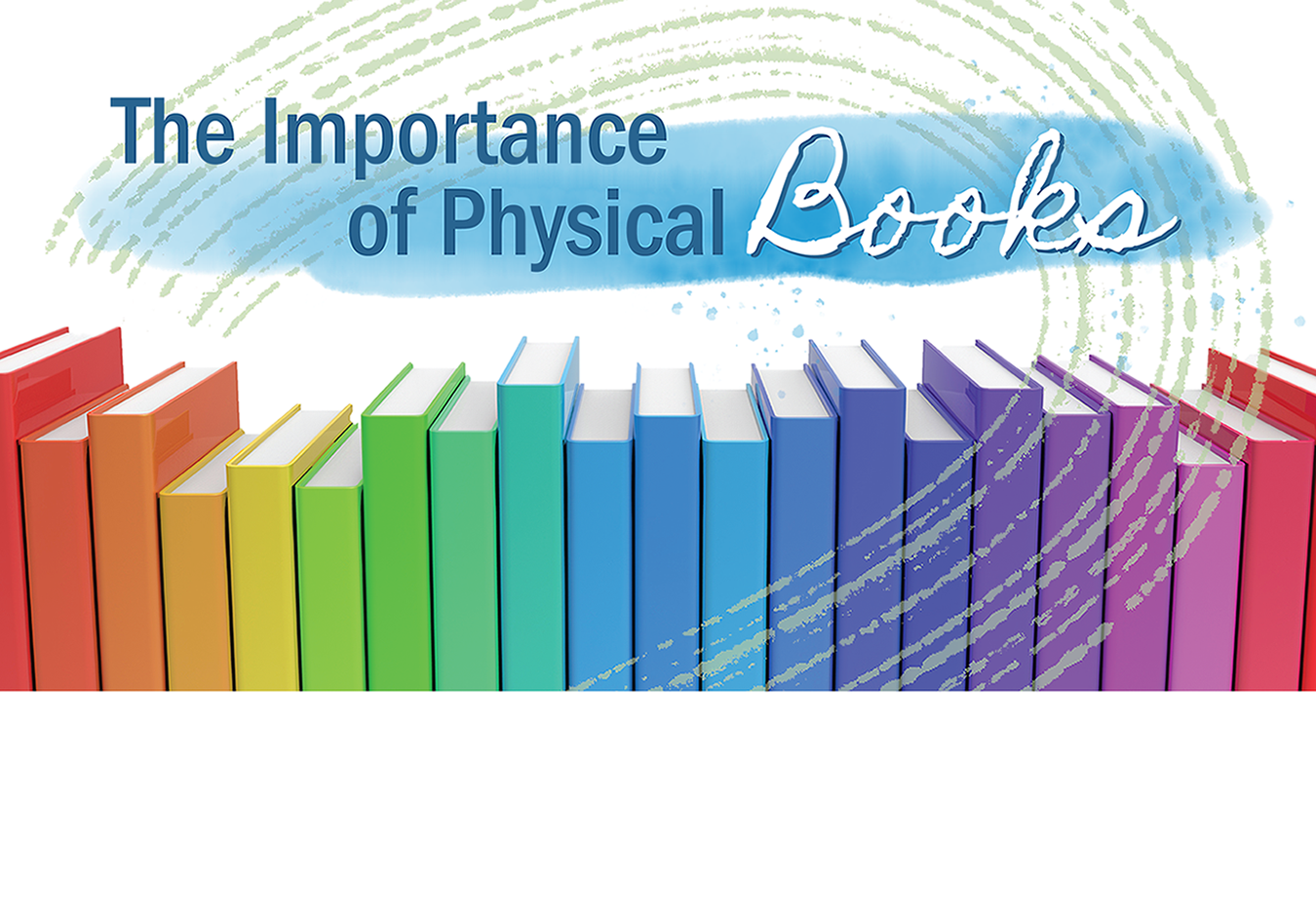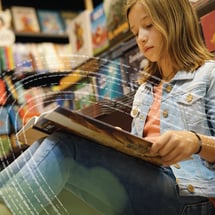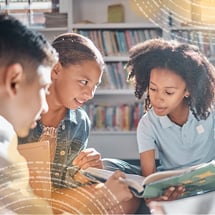.png)

Why A Book in Their Hands is Better Than One on Their Screen | Booksource
Share on Social Media
The trend towards digital, especially since the pandemic, has led many schools to rely more heavily on digital books. However, educational studies and mainstream media outlets agree that reading physical books on printed pages has many benefits for kids that outweigh the advantages of only using electronic equipment for reading. For instance, in their 2020 study, professors Vered Halamish and Elisya Elbaz noted that “children's reading comprehension is better when reading on paper than on screen.” This sentiment was more expressly voiced in a 2024 article appearing in The Guardian, in which author John R. MacArthur stated, “school districts around the country are eagerly converting to computerized test-taking and screen-reading programs at the precise moment when rigorous scientific research is showing that the old-fashioned paper method is better for teaching children how to read.”
Furthermore, reading physical books provides a sensory experience in a way that digital reading cannot. Reading physical books involves the sense of touch as pages are turned, the sense of vision as the words are read and pictures are viewed and the sense of smell as the scent of pages surrounds the reader. By engaging more of a student’s senses, this experience can help increase memory, improve concentration and offer a better overall experience for young readers.
Reading physical books can benefit kids in these additional ways:
Improves comprehension & retention

Students who read from a physical book are more likely to remember the information compared to students who have used a tablet or e-reader to read the same material. A 2018 study published in Educational Research Review found that “paper-based reading yields better comprehension outcomes than digital-based reading.” This is similar to a 2021 study that found, “shallow information processing occurs when reading on screen.” Students who read physical books also score higher in other areas, such as empathy, immersion in the book and understanding of the narrative. Researchers believe this effect is related to the tactile sensation of holding a book in your hands. When reading a physical book, the feel of paper pages under your fingertips provides your brain with some context, which can lead to a deeper understanding and better comprehension of the story.
Boosts intelligence

Not only does regular reading help make you smarter, it can also increase your brain power. Diving into a book opens a universe of knowledge starting from a young age. Exposure to vocabulary through reading physical books not only leads to higher scores on reading tests, but also higher scores on general tests of intelligence for children. Plus, stronger early reading skills may mean higher intelligence later in life.
Enhances concentration

E-books and screens can offer more opportunities for students to get easily sidetracked, as things like hyperlinks, scrolling and easy internet access can be a huge distraction. Using physical books, on the other hand, makes it easier for students to pay attention to the text in front of them. Furthermore, e-readers are designed to make it easy to skim across the top of the material without really taking it in. Physical books provide a slower experience that typically leads to deeper involvement with the material. Many readers find it easier to concentrate when reading in print because they can fully grasp and understand the text in front of them. “[Print reading] is kind of like meditation — focusing our attention on something still,” said literacy professor Anne Mangen. “I think it’s healthy for us as human beings to sit down with something that doesn’t move, ping, or call on our attention.”
Builds vocabulary

Researchers have found that students who read books regularly beginning at an early age gradually develop larger vocabularies than their peers. This skill can influence many areas of their lives, from scores on standardized tests to college admissions and job opportunities. Many employers look to hire people with excellent “soft skills,” like the ability to communicate effectively. Reading physical books is the best way to increase a child’s exposure to new words, learned in context, and prepare them to be good communicators.
Facilitates connections among peers

Reading physical books together in groups, such as in book clubs or in teacher-led read alouds, gives students the opportunity to interact with their peers. Book discussions can help build critical thinking skills while the interactive nature of a book group or club can enhance communication skills and social emotional growth. In his book, Literature Circles: Voice and Choice in Book Clubs and Reading Groups, former classroom teacher, college professor and literacy education author Harvey Daniels wrote that book clubs improve achievement scores, increase enjoyment of and engagement in reading, increase multicultural awareness and provide social outlets for students. Similarly, in describing a student book club she started, school counselor and former teacher Amy Whitewater told the American School Counselor Association, “They were kids from all different backgrounds, all different socioeconomic statuses, kids who didn’t always interact with each other. And so it was nice to bring them together and kind of see them connecting with each other in ways that they wouldn’t have.”
Reduces screen time

While most curricula and lessons are now accessed digitally by teachers and students, using physical books for independent reading, book clubs and read alouds can provide a welcome break from screens. Although some screen time can be educational, too much of it may have a negative effect on a child’s development and overall well-being. An excessive amount of screen time can increase the risk of health, development, behavior, attention and learning issues. Also, staring at a computer screen all day can cause screen fatigue, which may lead to eye strain and vision issues. With physical books, this is not a concern.
Turn Off the Screens with Our Free Printable Reading Games
As your students enjoy physical books, they can also have a blast with our printable reading games. Check out our free downloadable reading games and worksheets—Reading Games for Kids, Stop & Jot, Retell It and Reading Bingo—to print for use in the classroom or to share with parents to use with kids at home.

